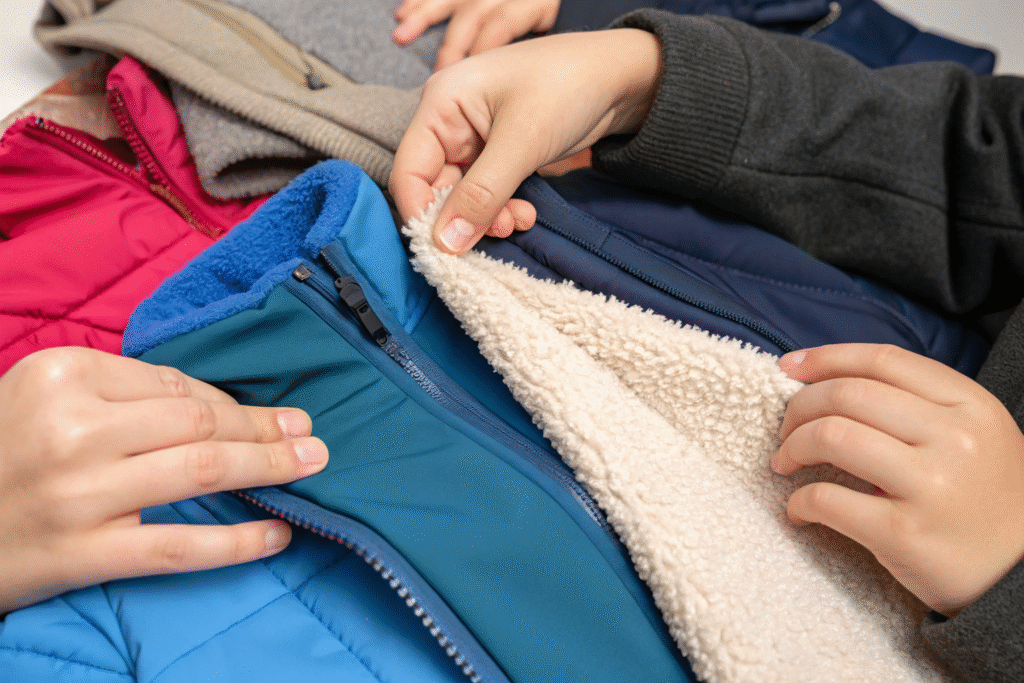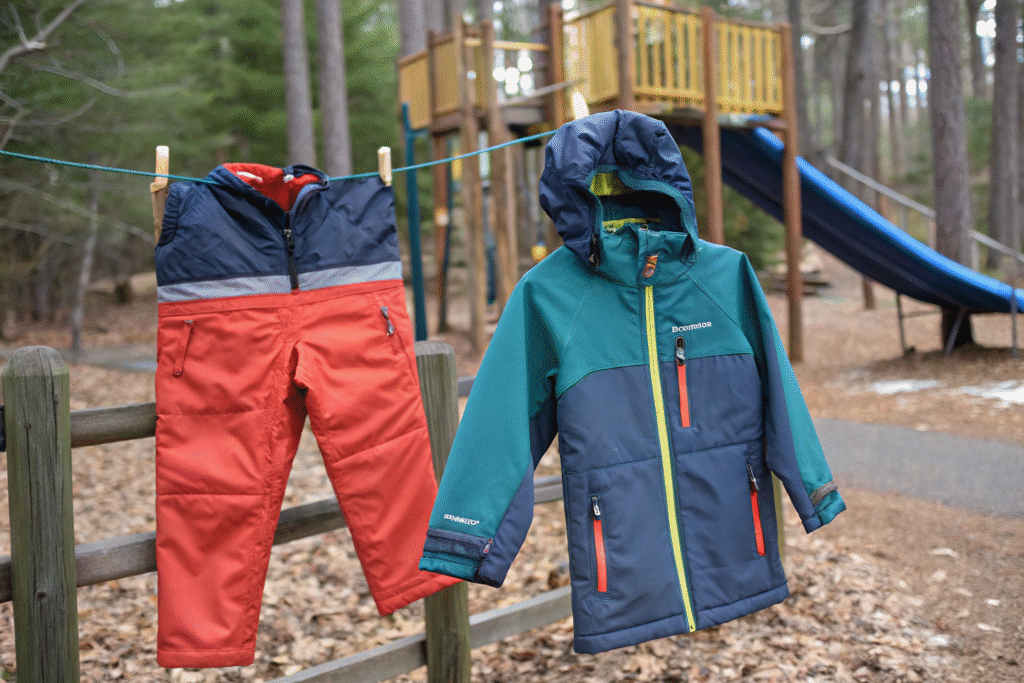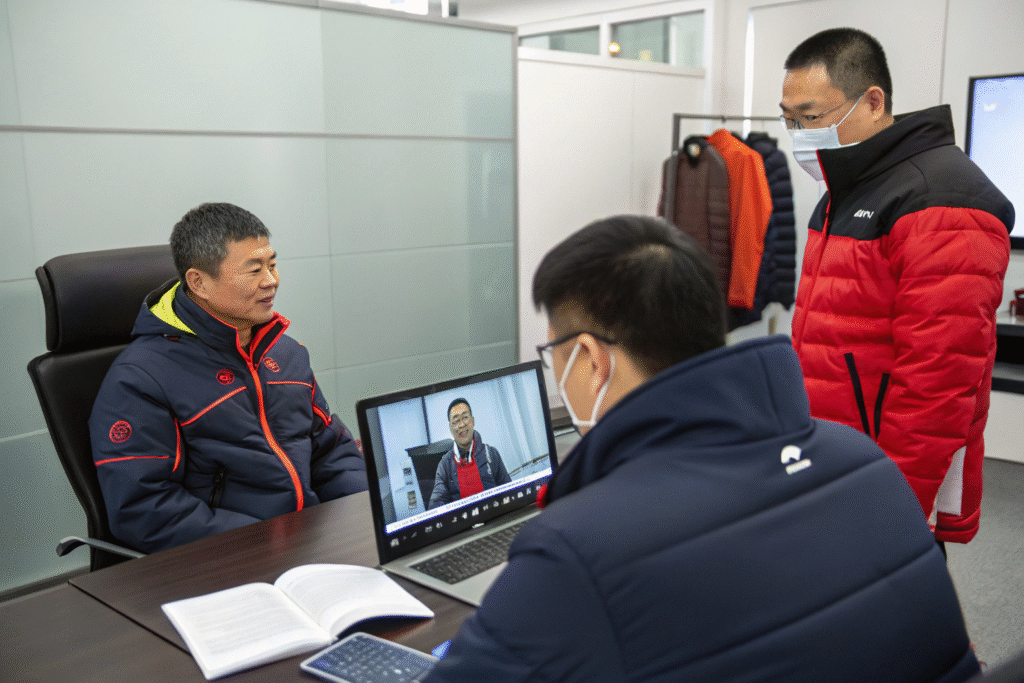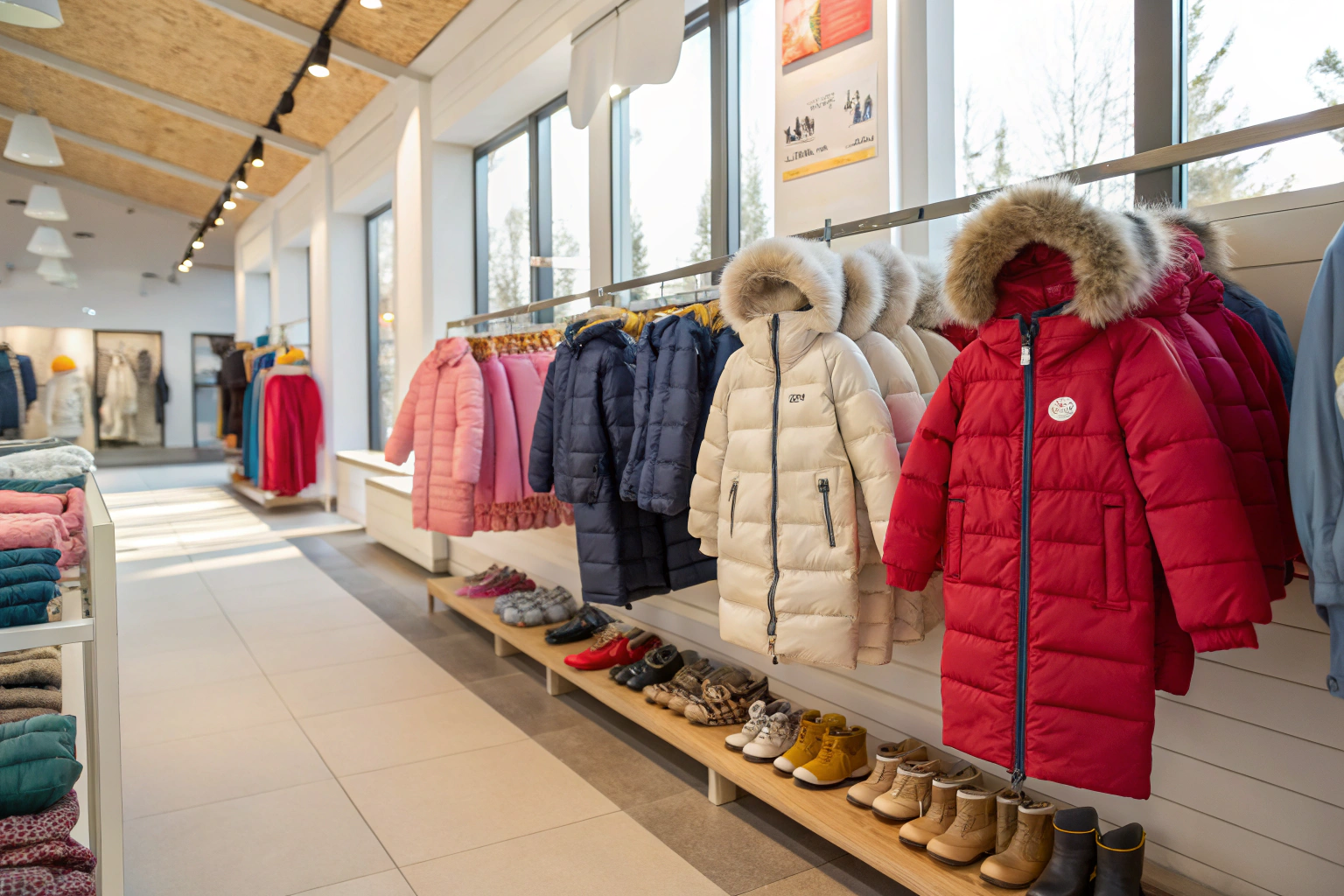As a kidswear manufacturer exporting to North America and Europe, I’ve seen firsthand how much retailers value the right outerwear. Not just for style—but for warmth, function, and durability.
Outerwear for babies, toddlers, and active kids must be designed with movement, comfort, and changing weather in mind—while meeting global safety standards.
From fleece-lined baby bunting to waterproof shells for playground adventurers, outerwear is one of the most technical and season-sensitive categories in children’s clothing. Here’s how you can source the right pieces for your brand or retail line.
What Materials Work Best for Kids’ Outerwear?
Material choice makes or breaks a garment—especially when the customer is a busy parent and the wearer is an energetic 4-year-old. Fabrics must offer warmth, breathability, and protection without limiting movement.
The best outerwear for kids combines lightweight insulation, moisture control, and soft linings—sourced from child-safe certified materials.

Why is fabric layering important in kids’ outerwear?
Layering allows temperature control throughout the day. For example, a baby puffer coat might combine polyester padding, windproof shell, and brushed cotton lining. Polartec fabrics are often used for their warmth-to-weight ratio.
We often suggest a shell+lining design for activewear buyers. Outer shell made with DWR-coated nylon or recycled polyester; inner layer in fleece or cotton-spandex blend for comfort.
Which certifications should buyers prioritize?
For safety-conscious parents, certifications are key. Outerwear should be tested for harmful substances. We use only OEKO-TEX® certified fabrics for infant and toddler ranges.
For recycled outerwear lines, check for GRS (Global Recycled Standard). This helps eco-focused brands prove sustainability while sourcing from Asia at scale.
What Are the Key Outerwear Features by Age Group?
Children’s outerwear isn’t one-size-fits-all. Babies need full-body warmth, toddlers need ease for dressing, and active kids need breathable shells that handle rough play. Design must follow the way kids move.
Smart outerwear matches age with function: cozy all-in-ones for infants, zip-up layering for toddlers, and breathable tech jackets for kids on the move.

What styles work best for babies?
For babies (0–12 months), the most popular outerwear is the one-piece snowsuit with built-in feet and mittens. It protects the entire body without separating pieces. We recommend soft zipper guards and fleece linings to prevent skin irritation.
Brands like Carter’s offer excellent examples of this category. We produce similar formats for private label clients, often with detachable booties and adjustable hoods.
How should toddler outerwear differ?
Toddlers (12M–3Y) need quick dressing features like double zippers, Velcro cuffs, and snap-on hoods. For potty training ease, two-piece sets are preferred over rompers. Many of our clients use YKK snaps for reliability.
We also suggest reinforced knees and wind-block flaps. These are high-wear zones for little ones learning to run, climb, and fall safely.
What Makes Outerwear Durable for Active Kids?
For kids aged 4–10, outerwear must hold up to constant use. Whether it’s daily school commutes or weekend hikes, these garments take a beating. Quality here means fewer returns and longer resale life.
Durable kids’ outerwear needs reinforced stitching, water-resistant coatings, strong closures, and reflective details for safety.

What construction methods add durability?
We use double-needle stitching and bar tacks at stress points like underarms and pockets. High-wear panels are sometimes made with Oxford fabric or Cordura blends. Seam-sealing tape is applied in our rainwear lines.
You can learn about strong outdoor fabrics at Ripstop by the Roll, which we use to prototype client requests for high-durability designs.
How do outerwear brands increase garment lifespan?
Top brands like Reima design for growth: adjustable cuffs, zip-out liners, and longer backs. We adopt similar techniques in our activewear lines, allowing resale or sibling hand-me-downs.
Using durable snaps (like Prym or YKK), anti-pilling fleece, and abrasion-tested outer fabrics ensures these garments last multiple seasons and cycles.
How to Source Custom Outerwear from a Reliable Supplier?
Outerwear involves technical fabrics, longer lead times, and higher unit costs. This makes choosing the right supplier absolutely essential for brand success.
An ideal supplier for outerwear offers R&D support, real fabric testing, flexible MOQs, and proven export experience with cold-weather gear.

What questions should buyers ask?
Ask about past clients in cold-weather categories. Do they handle seam-sealing? What is their MOQ for printed jackets? Do they have access to bonded fleece, DWR coatings, or reflective trims?
We provide test reports for colorfastness, waterproof rating (mm), and insulation weight (g/m²). This helps clients like outdoor boutiques or preschool uniforms plan specs with confidence.
How can a factory help reduce sourcing risk?
We suggest confirmed fit samples before bulk. For custom outerwear, we build timelines around fabric sourcing, mockup approval, and lab testing. Clients receive weekly updates and open carton inspections before shipping.
You can also request pre-shipment inspections via QIMA or AsiaInspection. We cooperate fully to ensure AQL 2.5 pass rate and clear documentation for customs.
Conclusion
Outerwear is one of the most important yet overlooked segments in kids’ fashion. It requires technical expertise, functional design, and strong material control. Whether you’re a boutique buyer, an e-commerce brand, or a schoolwear distributor, partnering with an experienced kidswear factory can help you build outerwear that performs, protects, and sells. Let us help you design what keeps kids warm—and your brand strong—season after season.










